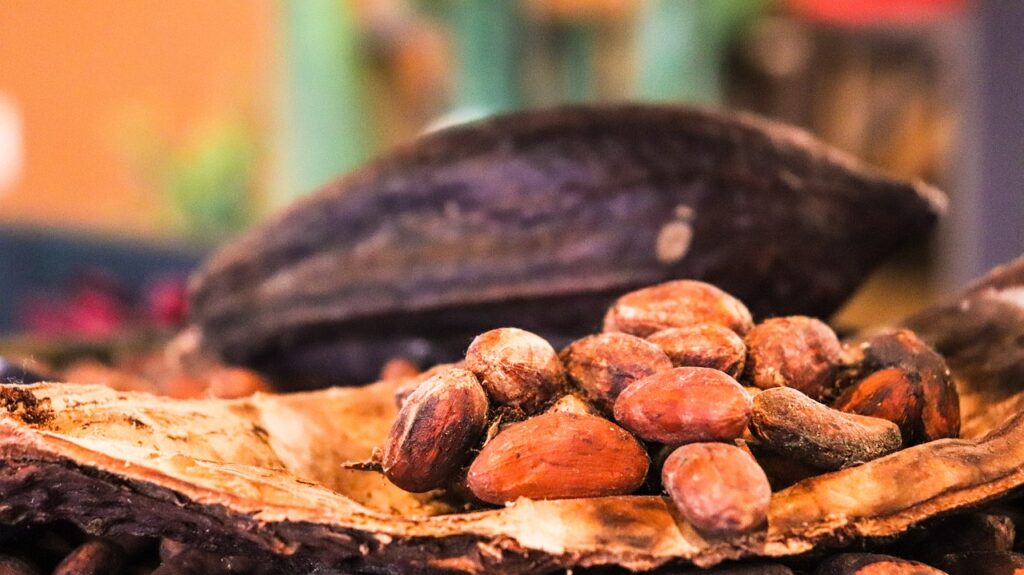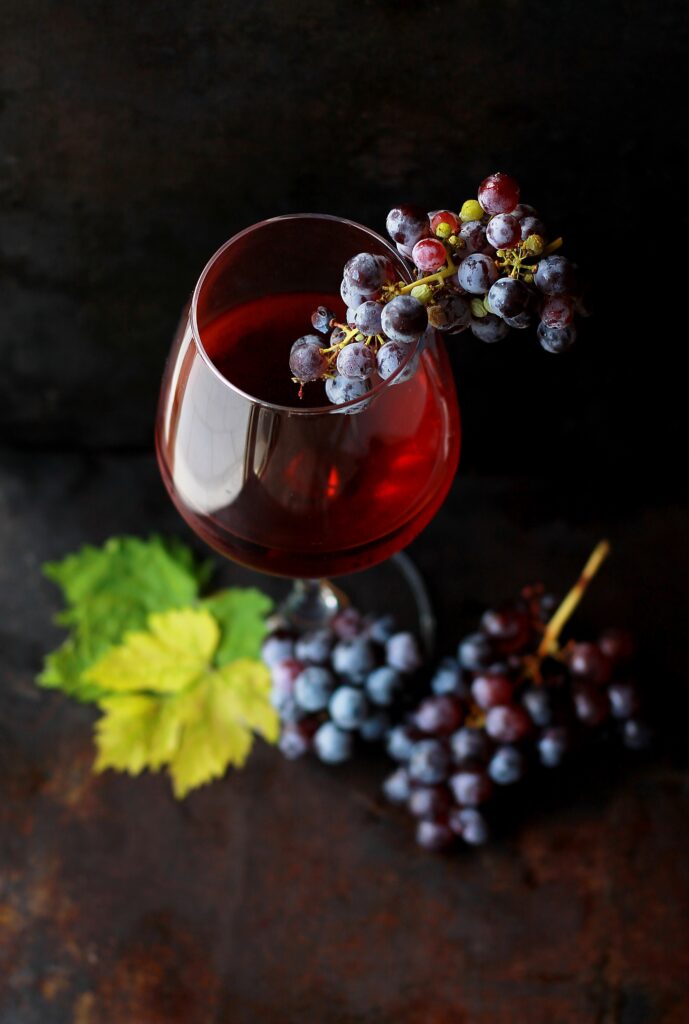Health Profile: Valentines Day
It’s February 14, Valentines Day, the annually celebrated (or reviled) day of love that has become a $17+ billion dollar industry in today’s world. As many are aware, Valentines day has a somewhat clouded origin story, possibly stemming from a combination of Roman masculine rituals, Christian-Catholic martyrdome, and romantic promotions by writers like Chaucer and Shakespeare. While its history may, like love itself, remain an ethereal mystery, there are legitimate health reasons for indulging in the season of love.

Chocolate (Theobroma cacao)
Perhaps the most trademarked gift of the holiday, chocolate actually has some pretty excellent properties. Chocolate contains many chemical constituents that all have positive impacts on our health. Here are some of them:
- Phenylalynine (PEA) – This constituent has amphetamine-like stimulating properties and can act as an anti-depressant. Perhaps this is why Professor Lupin in Harry Potter and the Prisoner of Azkaban continually offers Harry pieces of chocolate after his encounters with the joy-killing dementors.
- Flavonoids – known for acting as free radical scavengers and for modulating general inflammation in the body.
- Polyphenols – major antioxidants that can block formation of carcinogens and may also modulate hormone receptors. Chocolate has been recognized for increasing serotonin and dopamine levels, which then stimulate learning centers in the brain and can increase cognition.
- Alkaloids – Theobromine acts as a smooth muscle relaxant in the peripheral vasculature, leading to vasodilation. Theophylline can relax the bronchial muscles (could be useful in asthma) and acts on the heart to increase heart rate and strength of contraction.

Wine (Vino / Vitis)
It is said that wine was recommended by Hippocrates as a treatment for almost any illness. This could be due to its obvious relaxing and sedating effects, but wine also acts as a great menstruum (solvent) for extracting constituents from other medicinal herbs. Besides these qualities, wine has many of it’s own health-promoting benefits:
- Both red and white wine have been found to contain high levels of antioxidants, though white wines appear to have a greater amount than reds(1).
- Phenols – Resveratrol is perhaps the most famous constituent found in wine (derived from the skin of grapes when fermented into wine), and for good reason. Resveratrol protects the cardiovascular system by acting as a blood thinner (red more than white), lowers LDLs and elevates HDLs, and increases sensitivity to insulin. Perhaps more astonishingly, resveratrol increases longevity through binding of a specific gene (a sirtuin gene) called SIRT1, which activates it to increase levels of mitochondria in the cells(2). Mitochondria are our cellular powerhouses responsible for producing ATP, our cellular energy. Mitochondria, and therefore ATP, are thought to decrease with age, so supporting these cellular batteries could mean a longer life.
- Proanthocyanidins – Major antioxidants that are known to improve the health of blood vessels by promoting connective tissue integrity and decreasing inflammation; both of which could lower cholesterol levels and prevent heart disease.
- Boron – Wine contains a notable amount of Boron, which may be useful in bone health, immune function, brain performance, inflammation modulation, and prevention of osteoporosis, osteoarthritis, prostate, lung and cervical cancer (3).
Damiana (Turnera diffusa)
Flowers have become another staple of the holiday. Besides the aromatherapy imparted by these blooms, many flowering plants have medicinal benefits as well. While not a commonly gifted flower, because of the context I’m choosing to highlight Damiana, a flower with an extensive reputation as an aphrodisiac. While information supporting this specifically is limited, Damiana is a noteworthy nervous system trophorestorative – meaning it is supportive and nourishing to the nervous system. Among it’s many lovey qualities are:
- Anxiety / Nerve Tonic – Damiana has long been used to calm the nerves and strengthen their resilience – which may serve useful to many hopeful hearts around the holiday.
- Libido support – A 1999 rat study showed that Damiana may help with premature ejaculation and impotence (4). Another study reported that Damiana could suppress aromatase activity(5) – the enzyme responsible for converting testosterone to estradiol in the body. Since testosterone is primarily credited for libido in both men and women, this may explain its aphrodisiac effects.
- Pelvic tonic – Damiana is regarded as an emmenagogue (induces menstruation) and can therefore be helpful in regulating and supporting healthy menstrual cycles for women.
- Blood sugar support – A 2017 study showed the Damiana may improve diabetic outcomes by reducing blood sugar. This could also be useful for those who tend to over-indulge in holiday treats(6).

So by extension, what better underlying messages can you give the ones you love than some relaxing and restorative flowers, chocolate to improve mood and make the heart beat more efficiently, and wine to protect the organ of love for life? Whether you’re a Valentine’s Day devotee or opponent, at least you can feel good about indulging in some of the seasons more traditional luxuries.
Recipe: Want to make your own medicinal wine this season? Try applying a few of these tips and use your own creativity and imagination:
- Reds: Reds are already fruity so focus on enhancing them with either juicier fruits like elderberry or hawthorne, or more complex spices like black pepper, juniper, clove, cinnamon, and cardamom.
- Whites: White wines tend to be lighter and drier, so these are complimented well by berries, like elderberry, bilberry, hawthorne, and cherry, or more subtle herbs like lemon balm, lemon grass, orange peel, and chamomile.
- Directions: Grab a bottle of your favorite wine (or any mediocre wine and this will liven it up) and add in only a small amount of 1-3 of the listed herbs above. Let infuse for a few days and then serve and enjoy!
References:
1)Lamuela-Raventós RM, de la Torre-Boronat MC. Beneficial effects of white wines. Drugs under experimental and clinical research. 1999;25(2-3):121-124.
2)7 2013 DAVIDCAMERONM. HMS. New Study Validates Longevity Pathway. https://hms.harvard.edu/news/new-study-validates-longevity-pathway-3-7-13. Published March 7, 2013.
3)Pizzorno JE. Boron. In: Pizzorno JE, Murray MT, eds. Textbook of natural medicine. 4th ed. St. Louis, MO: Elsevier/Churchill Livingstone; 2013.
4)Arletti R, Benelli A, Cavazzuti E, Scarpetta G, Bertolini A. Stimulating property of Turnera diffusa and Pfaffia paniculata extracts on the sexual behavior of male rats. Psychopharmacology. 1999;143(1):15-19. doi:10.1007/s002130050913.
5)Zhao J, Dasmahapatra AK, Khan SI, Khan IA. Anti-aromatase activity of the constituents from damiana (Turnera diffusa). Journal of Ethnopharmacology. 2008;120(3):387-393. doi:10.1016/j.jep.2008.09.016.
6)Parra-Naranjo ACAD, Delgado-Montemayor C, Fraga-López A, et al. Acute Hypoglycemic and Antidiabetic Effect of Teuhetenone A Isolated from Turnera diffusa. Molecules. 2017;22(12):599. doi:10.3390/molecules22040599.


